Gujjar Village

This morning after breakfast we all got into a trailer towed by a tractor. The trailer had a thick blanket with padding underneath, which was very necessary for the bumps we were about to encounter. All eight of us students, the chaperones, and many of the Ashram graduates piled in under the blazing sun, and after a short delay, we set off. After a few hundred meters of the highway, we pulled off onto a dirt road tucked just between some vendors’ stalls and immediately started getting bounced around by the road. After a good ten-minute roller coaster ride, we arrived at the Gujjar Village.
The Gujjar people, or Gurjar as they are commonly known, are nomadic tribal people, who are known for their herding of cows and water buffalo. They historically and currently are known to inhabit the lands of what are now Afghanistan, Pakistan, and India, some sources claim they have lineages tracing back as far as 1 CE. Most are currently practicing Muslims. While they have a tradition of being nomadic, they are also known for mostly isolated clans and factions that each have some variance in rules and customs. A number of the tribes are today settled down to one place, some having done so for hundreds of years. This has prompted the government of India to give them the rare distinction of being legally able to live on and harvest land within what are officially state and nationally-owned forests through the 2006 Forest Rights Act. Regardless, local forest officials lay claim to park-owned land, causing a conflict over land rights that is ongoing to this day.
The village was larger than I was expecting, with ~35 buildings, which were all quite well put together and maintained. They were made of mud, cow dung, and straw, with a light peachy pink color, and had high straw roofs. Most of the buildings had some sort of special design, alternating up and down triangles were common but no two buildings were the same. They also had intricate painted patterns on many of the houses’ insides, to complement the shelves and windows, all carved out of the walls upon construction. A few houses had solar panels with a small internal battery capable of charging multiple phones and running a few lights. There were two communal kitchen buildings, and a storeroom, along with many different types of buildings for livestock. There were a few chicken houses, constructed entirely of sticks with boxes inside for egg-laying. There were also many cows in various places, some with their own houses, and others roped to fences.
It struck me as a really good example of how the insertion of some modern things happens in a centuries-old village. There is no waste management, so any packaging that things are bought in goes down the local ravine, or sometimes just on the ground. All of the solar panel systems seem awkwardly jerry-rigged in, long after any thought was put into the building, the one battery I did see was in a random box with wires going every which direction inside. There is also the tarped roof, where in the past they likely would have fixed the straw, the less permanent solution is chosen today. It is also important to note that they have an interesting circumstance, where the water buffalo that they almost exclusively watch over, produce a different, highly desired kind of milk. This means that they have all of the bartering power they need, they are by no means poor, and while they live a life similar to what they have for generations, their progression towards normalization of modern things like plastic-packaged foods and electricity is mostly limited by their desire to keep tradition. So, between that, and conflicts with local government, I really have no idea what in the village is going to change in the coming years.
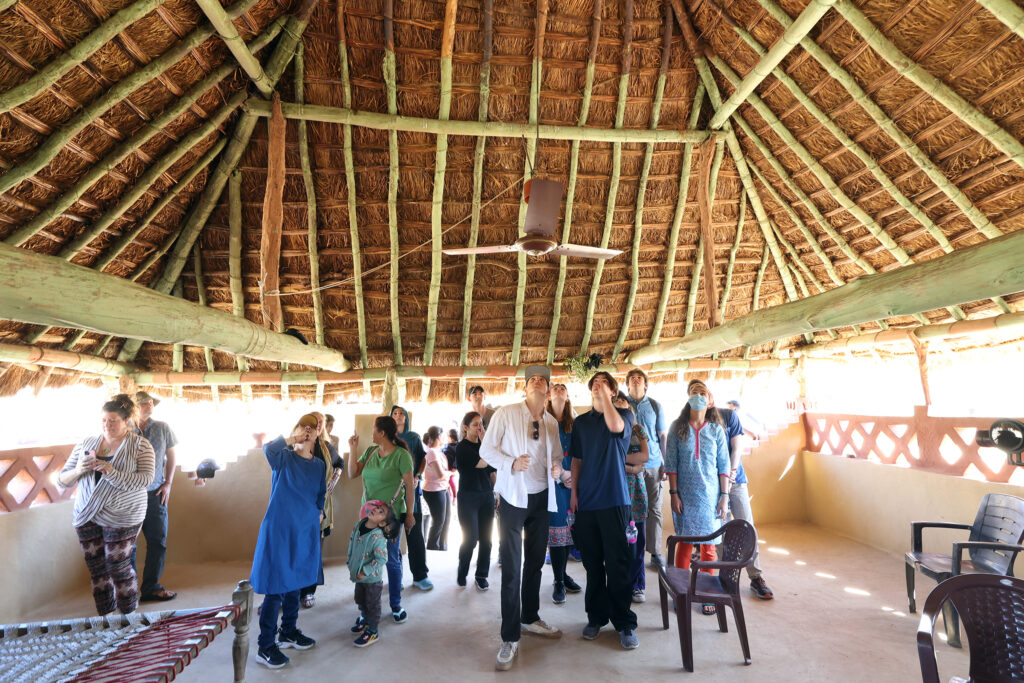
Har Ki Pauri

Leading up to Har Ki Pauri, I had heard stories about this almost magical event and had formed quite the expectation in my head. I imagined clear skies, peaceful music, and a soft spot to watch the evening unfold. I expected the ceremony to go smoothly and for small boats of flowers to be launched off by each individual, making a beautiful sight of small lights covering the river. Before I share my once in a lifetime experience, I want to share a little backstory.
The aarti ceremony at Har Ki Pauri in Haridwar is a spiritual experience that attracts devotees and travelers from all over the world. It is a famous, almost wharf-like place located on the banks of the Ganges River in Haridwar. Haridwar is a holy city for the Hindus. The legend states that it was created when a drop of nectar fell during the world’s creation. The aarti ceremony takes place every evening at sunset, and is a mesmerizing sight and experience to be part of. The preparations for the aarti ceremony begin several hours before the actual event. Priests and volunteers decorate the ghat with flowers, diyas, and other offerings. The main attraction of the ceremony is the grand display of lights, sound, and devotion.
As the sun sets, the priests and volunteers gather on the banks of the Ganges and the ceremony begins. The priests offer prayers to the river and the devotees join in the chanting of hymns and prayers. The highlight of the aarti ceremony is the synchronized waving of the diyas (an oil lamp made from clay or mud with a cotton wick dipped in oil or ghee) by the priests. The priests hold the diyas in their hands and move them in a circular motion, creating a beautiful pattern of light.
After a couple of hours of shopping on the crowded streets of Haridwar, we arrived early for aarti so that we could secure seats close to the location of the ceremony. Emerging from the narrow complex streets, lined with small stores and people selling their goods, we saw the shores of the Ganges. It was not that busy, so after taking our shoes off, we made our way down and washed our hands as is customary. Some of us were given small boats of flowers that we set afloat after reciting a Hindu chant that gave our families many blessings. We sat down on the stairs lining the shore as the waves lapped against the bottom of the steps and newcomers started taking their spots on the side of the river. Suddenly people were coming from all directions as the ceremony started. Soon, we were surrounded by people standing in the river, blocking our view. I stood up to get a better view, and as the sun began to set, they started to light candles, torches, and the diyas. The priests stood, facing the river, and began to wave their diyas. The diyas were moved in a circular motion, creating a mesmerizing pattern of light that danced on the river’s surface. I was surprised at how much soot was being released due to all the oil being burned, blurring with the sunset to create a hazy feel which added to the experience as a whole. As the priests waved the diyas, the sound of bells and conches filled the air, creating a unique melody. The devotees joined in the chanting, adding to the musical atmosphere. The entire scene was so surreal, I felt as though I had stepped into another world. As the ceremony ended, the priests offered their final prayers, and many people began to swim in the holy river.
Looking back on how I thought it would go versus the reality of the experience, I was not expecting it to touch me at the level it did. As we left, I shared with my classmates how that experience was a truly once in a lifetime opportunity, and I felt honored to be part of something so foreign to me. Expectations are meant to be exceeded, and this experience blew mine out of the water. That fact that the experience was so different from what I imagined, mixed with the many small experiences we had throughout the day, made me contemplate many things on our drive back to the place we currently call home.
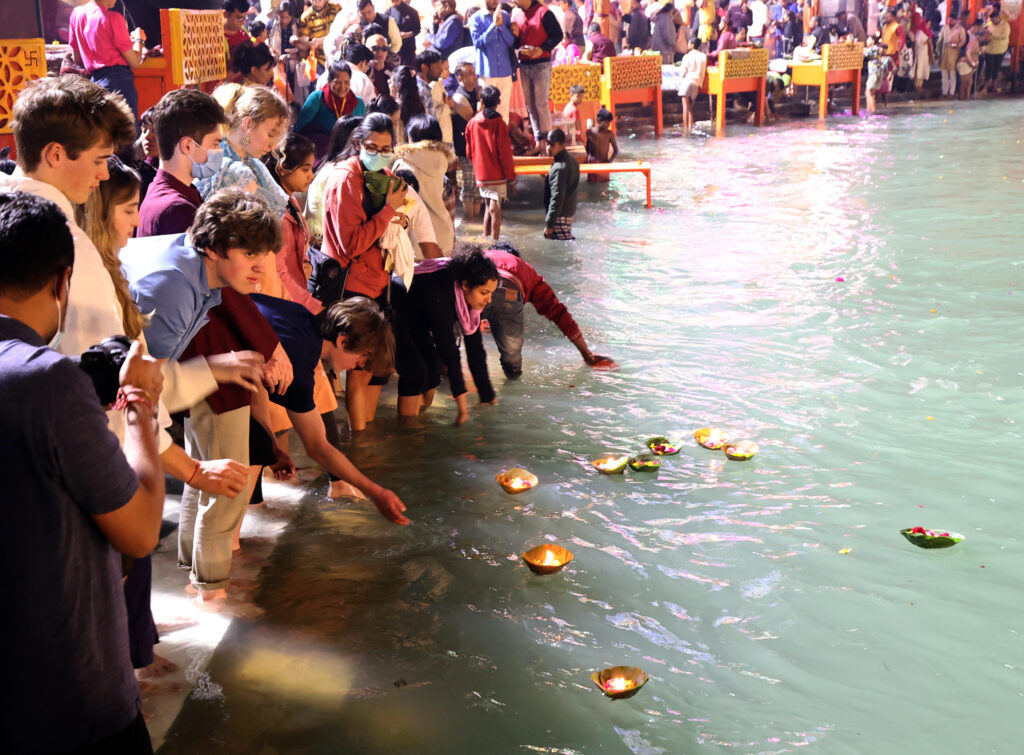
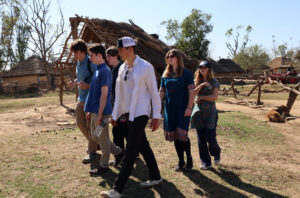
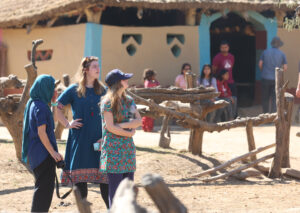
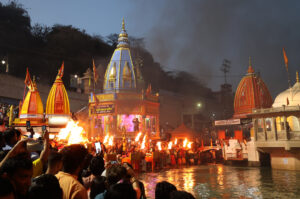
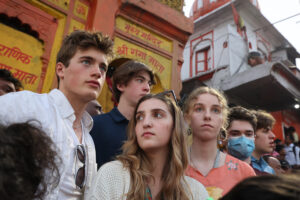
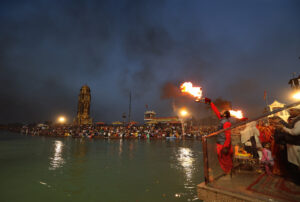
You must be logged in to post a comment.